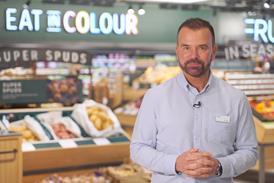Shoppers’ spending power increased in March but inflation on essential items crept above zero for the first time since the end of 2014.
The average UK household had a weekly disposable income of £198 last month, up 6.3% year-on-year from £186, according to the Asda Income Tracker.
It marked the 17th consecutive month that annual growth in spending power had remained above £10.
However, consumers found themselves paying more for goods during the month after inflation crept up to 0.1% - the first time in 18 months that it has moved into positive territory.
Prices rose 1.4% across clothing and footwear, while the cost of dining out in restaurants and cafés jumped 1.9% during the month.
But the Tracker said those increases there were offset by “notable” drops in the cost of fuel. Vehicle petrol and diesel slumped 9.2% compared to March 2015, while the cost of electricity and gas fell 3.7%.
Food price deflation also persisted during the month, as the cost of groceries slipped 2.7% on the year.
The East of England experienced the largest increase in disposable income, rising £19 a week compared to the £12 UK average.
Consumers in London saw their spending power jump £14 per week, but the region’s 5.5% increase in spending power was below the nationwide average of 6.3%.
An Asda spokeswoman said: “The sustained rise in discretionary income gives family finances a welcome boost ahead of the summer months. While inflation has slightly increased in recent months, low overall interest rates continue to be good news for consumers.
“The outlook remains cautiously positive, despite a slow-down in wage growth across the country as a whole, which really can be seen on a regional level where we are already noticing an increase in household income.”
Cebr economist Sam Alderson added: “While increases in inflation in recent months have weighed on growth rates, households across the country continued to benefit from robust annual increases in spending power in March.
“While assembly elections and the upcoming referendum on EU membership provide an uncertain background for consumers, the low levels of essential item inflation and growing discretionary incomes should continue to provide support to both consumer spending and overall economic growth.”










![Ollie Pryor[46]](https://d53bpfpeyyyn7.cloudfront.net/Pictures/274x183/1/7/1/3119171_olliepryor46_336332_crop.jpg)

















No comments yet